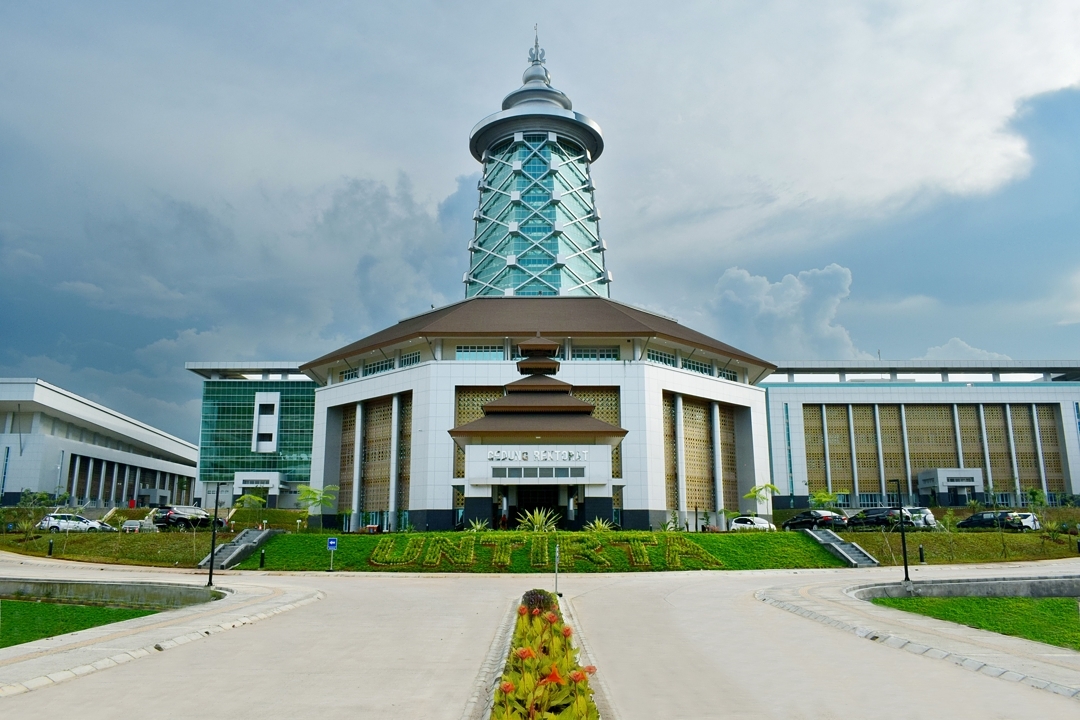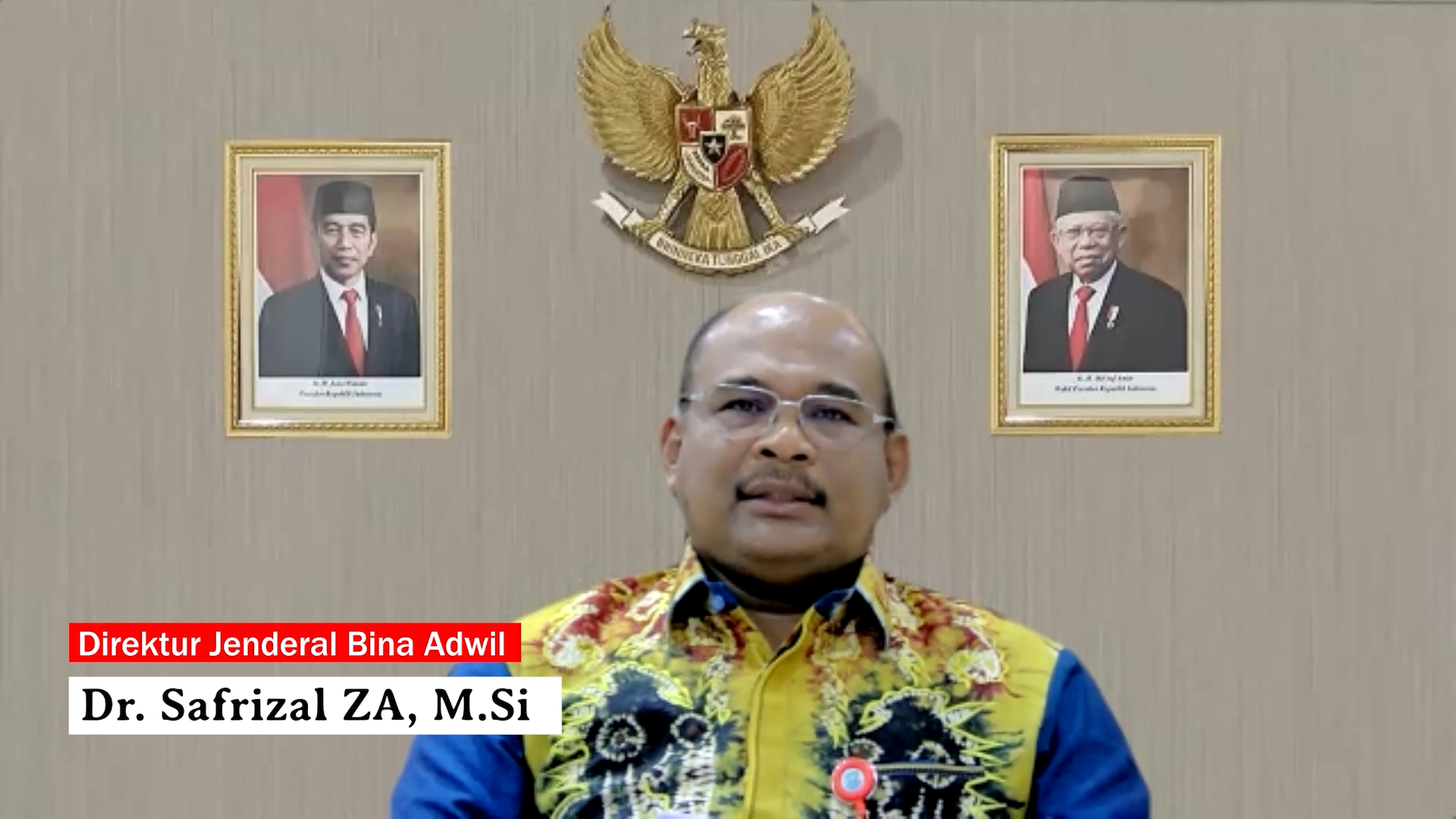
Figure 1. Dr. Safrizal ZA, M.Si delivering his speech
In his speech, Dr. Drs. Safrizal ZA., M.Si stated that urban areas in Indonesia continue to grow with an average growth of 4.1% per year, faster than cities in other Asian countries. The increasing growth of the population living in urban areas provides economic opportunities and vertical mobility. Meanwhile, the surge in urbanization due to uncontrolled urban development will result in urban sprawl. These cities grew beyond administrative boundaries. The occupancy of productive land and even protected areas around urban centers are used for residential development or built-up land and industrial land that supports urban areas. The growth of urban areas, which is not accompanied by the fulfillment of essential urban services such as housing, drinking water, sanitation, and public transportation, has caused negative externalities that impact livability. Cities will experience environmental quality degradation, threat of disaster, clean water crisis, declining air quality, local food security crisis, and in general, it will cause ecosystem damage. Urban area management must be carried out through sustainable development to minimize these negative factors, conceptually and operationally. Sustainable development has three mutually sustainable pillars, economic development, social development, and environmental development. The three pillars are symmetrically proportional to the implementation of the UI GreenCityMetric. “UI GreenCityMetric will be able to strengthen and together to realize the implementation of the Government Regulation on Urban. UI GreenCityMetric eventually can also be a reference for elaborating cities in Indonesia related to environmental issues, sustainable development, innovation, and collaboration."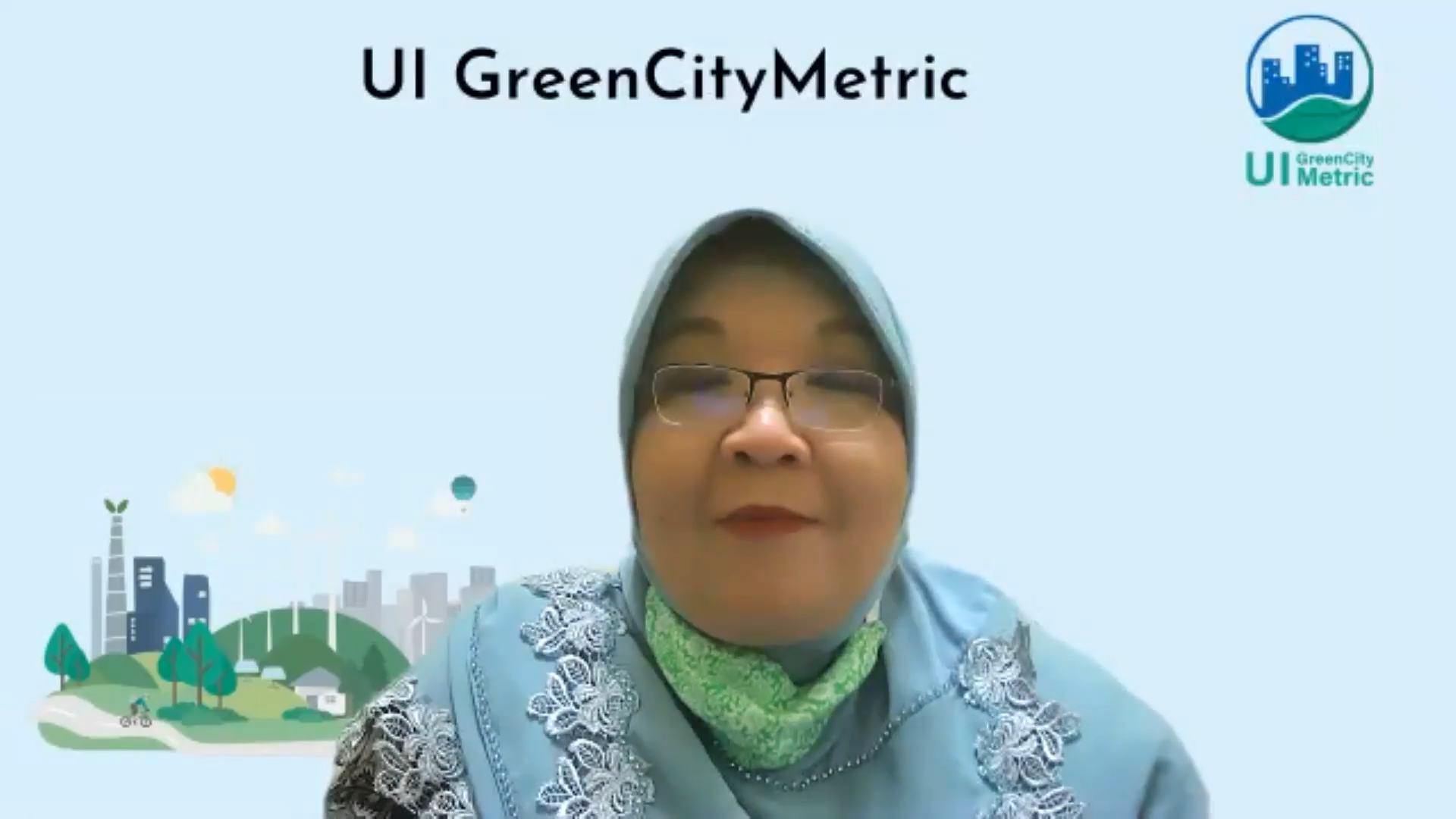
Figure 2. Prof. Dr. Ir. Riri Fitri Sari, M.M., M.Sc delivering his speech
In her speech, Prof. Dr. Ir. Riri Fitri Sari, M.M., M.Sc, stated that the UI GreenCityMetric event to Regencies/Cities was based on the background that for 12 years UI GreenMetric had ramkes, ranking universities in the world in terms of sustainability. The GreenMetric network impact in which everyone have the opportunity to learn and share their experience. It is seen that the leadership continues to monitor the development and implementation of the categories and six indicators in UI GreenMetric. So, for Indonesia, we think this is the best moment for us to learn together based on the international standards we have previously established to create smart, resilient, sustainable cities capable of providing support for good health and prosperity for all. With this background, we hope that all can create environmentally friendly and responsible cities to ensure that everyone can follow the latest standards in realizing prosperity and sustainable development goals that can be recognized by empowering smart cities, responsible and resilient cities. "Hopefully, with today's event and discussion sessions, it will eventually lead to the realization of all of our collaborations to ensure and realize that our cities will become advanced, modern cities that we can pass on to our next generation in good condition and capable of supporting a decent and dignified life.” The participating 78 regencies/cities the event were divided into 3 days. The first day (January 25th, 2022) was attended by 32 regencies/cities consisting of 29 cities and 3 regencies, including Cilegon City; South Tangerang City; Yogyakarta City; Banjar City; Bekasi City; Bogor City; Cimahi City; Cirebon City; Depok City; Tasikmalaya City; Magelang City; Pekalongan City; Salatiga City; Semarang City; Surakarta City; Tegal City; Batu City; Blitar City; Kediri City; Madiun City; Malang City; Mojokerto City; Pasuruan City; Probolinggo City; City of Surabaya; Bitung City; Manado City; Tomohon City; Denpasar City; Badung Regency; Gianyar Regency and Tabanan Regency.
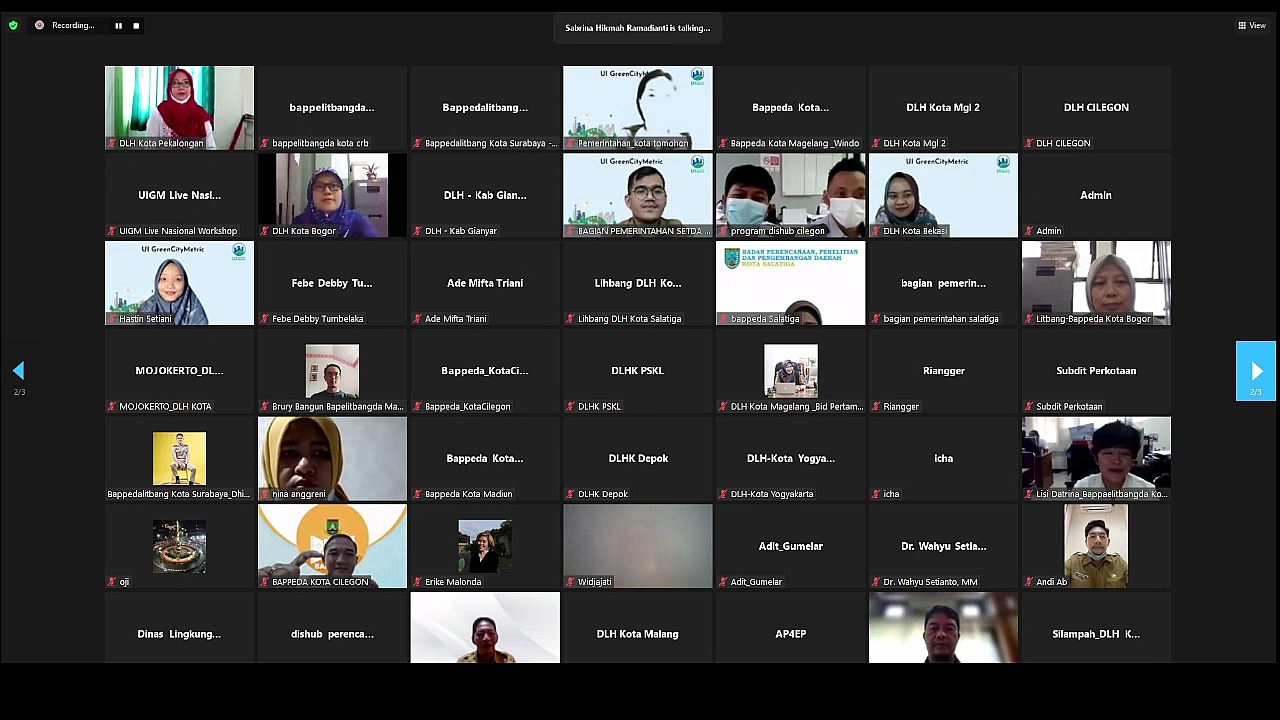
Figure 3. Participants on the first day
In the second day (January 26th, 2022), 23 cities and 2 regencies participated, including Banda Aceh City; Langsa City; Subulussalam City; Jambi City; Pangkalpinang City; Batam City; Bandar Lampung City; Pekanbaru City; Padang City; Padangpanjang City; Pariaman City; Payakumbuh City; Solok City; Lubuklinggau City; Pagar Alam City; Palembang City; Prabumulih City; Binjai City; Gunungsitoli City; Medan city; Padangsidempuan City; Tanjungbalai City; Tebing Tinggi City; Semarang Regency and Kendal Regency.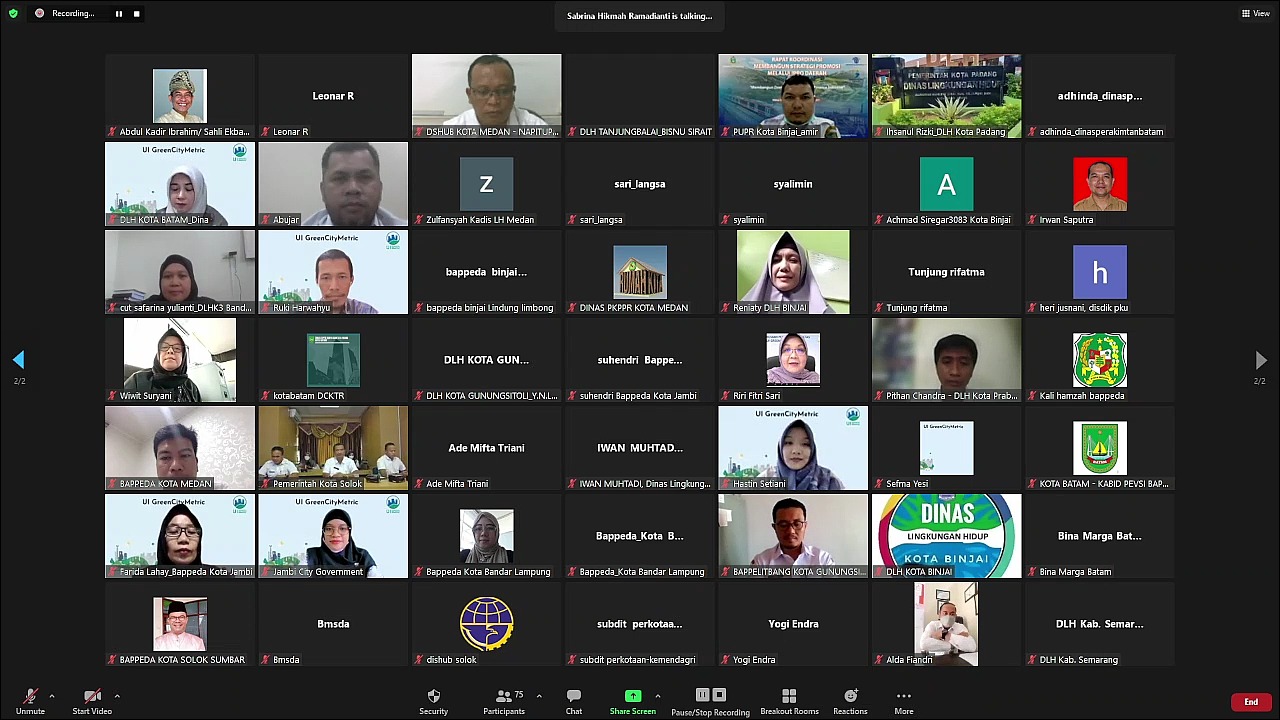
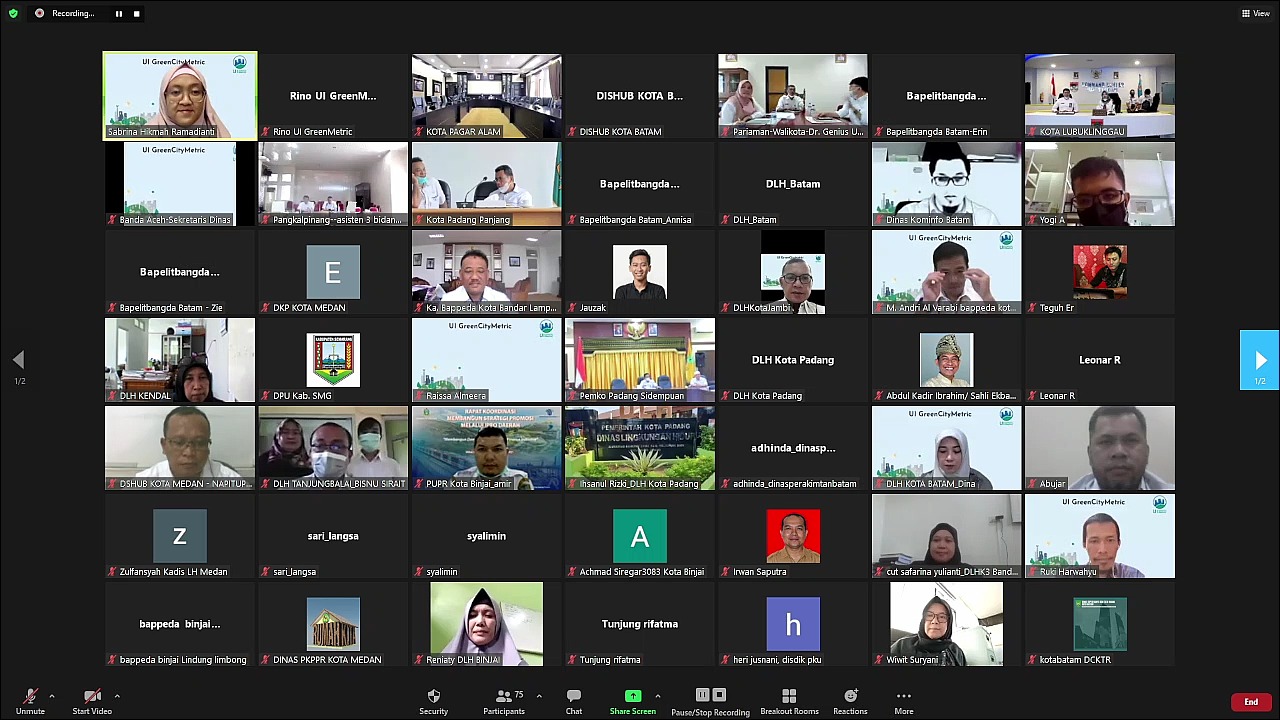
Figure 4. Participants on the second day
Meanwhile, the last event on January 27th, 2022 was attended by 17 cities and 4 regencies consisting of Mataram City; Pontianak City; Banjarbaru City; Banjarmasin City; Palangkaraya City; Balikpapan City; Bontang City; Samarinda City; Tarakan City; Makassar city; Parepare City; Baubau City; Tual City; Jayapura City; Sorong City; South Jakarta Administrative City; East Jakarta Administrative City; Minahasa Regency; North Minahasa Regency; West Tulang Bawang Regency and Demak Regency. After the opening remarks, the event was then continued with the presentation of the UI GreenCityMetric Rankings by a different speaker every day, subsequently by Prof. Ir. Gunawan Tjahjono, M.Arch., Ph.D. ; Dr. Nyoman Suwartha, S.T., M.T., M.Agr and Junaidi, M.A. The three speakers explained UI GreenCityMetric, the context adopted by UI GreenCityMetric, the relationship between categories and indicators from UI GreenCityMetric, and the Sustainable Development Goals; methodology, indicators, and assessments in UI GreenCityMetric. In addition, the steps related to filling out the UI GreenCityMetric online questionnaire and several things that must be considered in filling out the questionnaire are also explained. At the end of the session, a discussion session and question and answer session were held between the speakers anparticipants.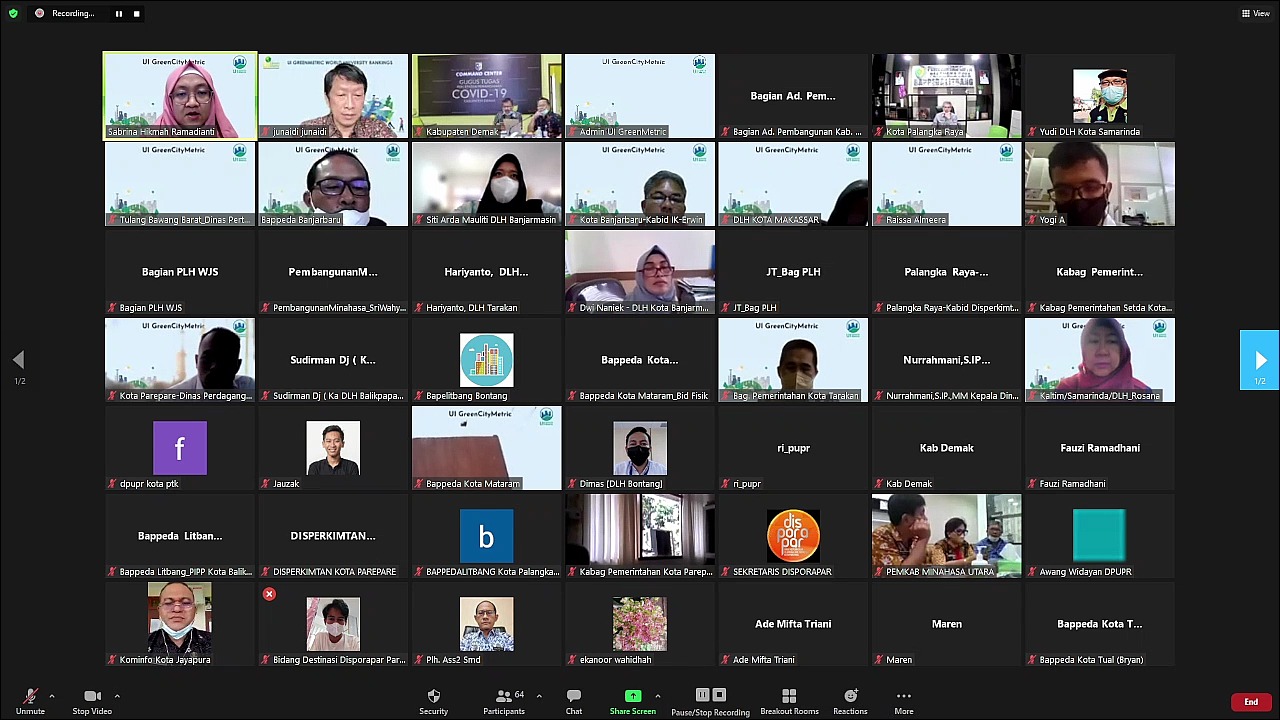
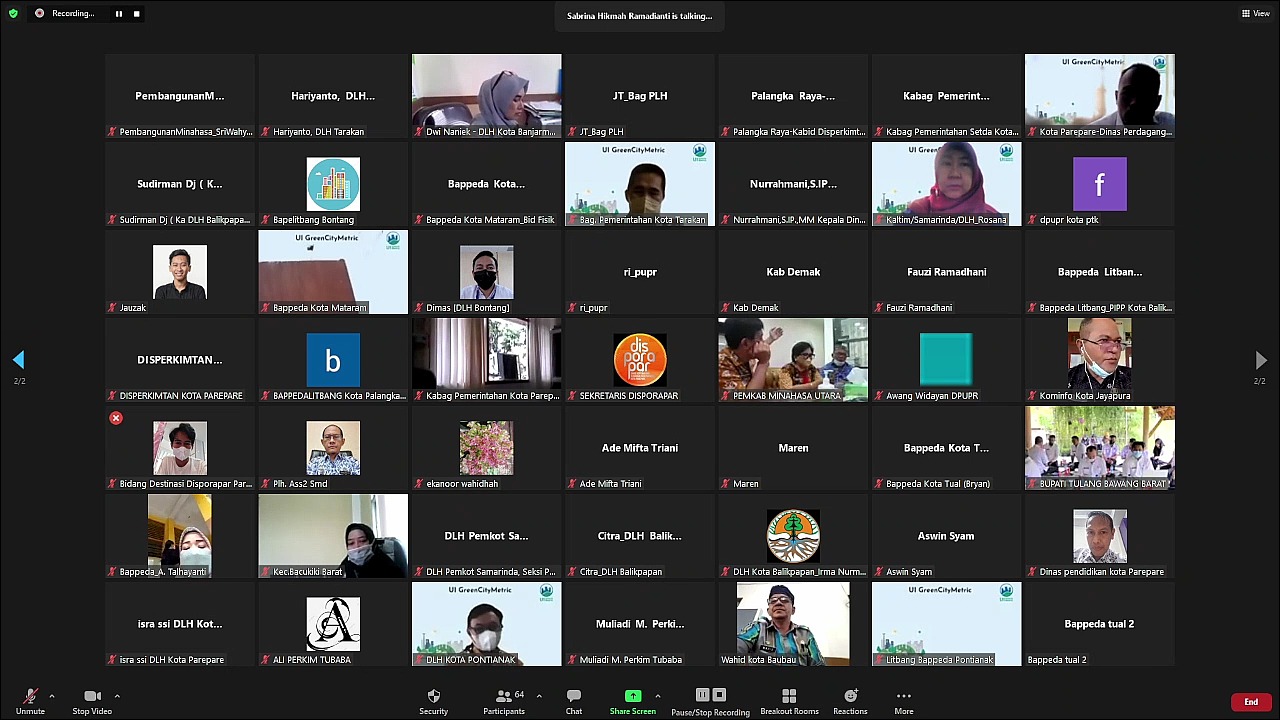
Figure 5. Participants on the third day
"Sosialisasi UI GreenCityMetric Rankings Untuk Kabupaten/Kota di Indonesia" received a positive response from Regencies/Cities. They were very interested and enthusiastic to support this UI GreenCityMetric. They also hope that the UI GreenCityMetric will remain consistent and sustainable every year. UI GreenCityMetric will also support regions in implementing the SDGs and a network of inter-city and inter-provincial collaboration to create a sustainable environment and will be a comprehensive evaluation method.